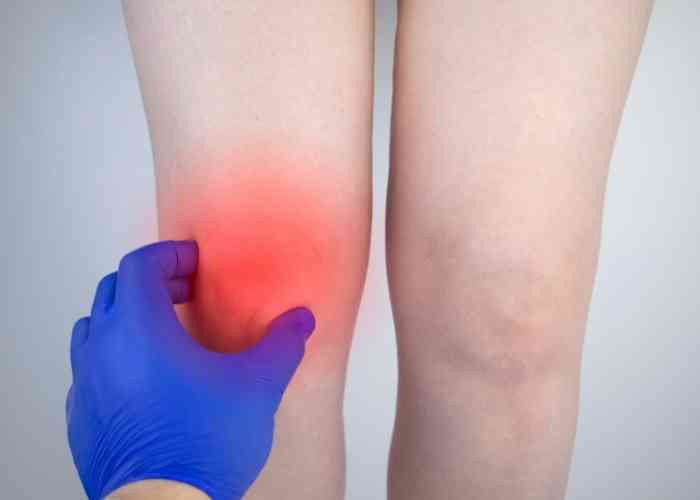What is a patellar tendon injury?
Because tendons are strong fibrous tissue cords that connect muscles to bones, the patellar tendon name can be misleading as it is actually a ligament that connects two bones. The patellar tendon anchors the patella (kneecap) to the tibia (shin bone) by attaching to the bottom of the patella and the tibial tubercle, a bony prominence at the top of the tibia. The patellar tendon works in concert with the quadriceps tendon and the quadriceps muscle to straighten the leg. A patellar tendon injury can precipitate from a sports-related incident, direct trauma, patellar dislocation, or degenerative condition. Any inflammation or injury to this tendon can result in patellar tendon pain and make activities of daily living difficult to perform. Dr. Ronak Mukesh Patel, orthopedic knee specialist serving patients in Sugar Land, Pearland, and the Houston, Texas area, has the knowledge and understanding, as well as substantial experience in treating patients who have experienced a patellar tendon injury.

Are there different kinds of patellar tendon injuries?
The patellar tendon is typically injured in three different ways, each resulting in either a tendon tear or significant inflammation:
- Patellar Tendon Tear: The patellar tendon can be partially or completely torn from its attachment site on the patella or the tibial tubercle. A traumatic event such as a patellar dislocation or sports-related injury is often the cause of a patellar tendon tear; however, underlying anatomical abnormalities, such as inherent muscle weakness or an elevated kneecap, can also result in a patellar tendon tear.
- Patellar Tendinitis.: This condition, also known as “Jumper’s Knee”, is marked by acute inflammation of the patellar tendon. Athletes are at a higher risk of developing patellar tendinitis, especially those who frequently jump onto hard surfaces as part of their sport.
- Patellar Tendinosis: This condition develops when patellar tendinitis becomes a frequent issue or is not properly addressed. The difference between patellar tendinitis and patellar tendinosis is the physical condition of the tendon. With tendinosis, the tendon is inflamed but doesn’t’ have microscopic damage. Tendinosis, on the other hand, shows damage with a scared and rubbery appearance where the fibers are disorganized. The chronic inflammation of the patellar tendon with tendinosis is often difficult to treat.
What are the symptoms of a patellar tendon injury?
One of the first indicators of a patellar tendon injury is pain that is located below the kneecap. Other common symptoms of a patellar tendon injury can include:
- Knee tenderness
- Bruising over the patella or upper tibia
- Cramping of the affected knee
- Difficulty walking
- Visible dislocation of the patella
- “Floating” patella because it is no longer anchored and can easily be moved
How is a patellar tendon injury diagnosed?
Dr. Patel will obtain a complete medical history to include any previous knee injuries and any history of patellar tendinitis. This is followed by a thorough physical examination with special attention on knee extension and knee flexion. Diagnostic imaging tools, such as x-rays and magnetic resonance imaging (MRI), can be useful in identifying any damage to the soft-tissue structures surrounding the patella and confirming the diagnosis of a patellar tendon injury.
What is the treatment for a patellar tendon injury?
Dr. Patel will consider the patient’s age, activity level, medical history, and desired recovery outcomes when designing an appropriate treatment plan.
Non-surgical treatment:
Non-surgical therapies can provide sufficient relief for patients that do not experience any knee instability as a result of the patellar tendon injury. A knee brace or other joint immobilization device can provide protection and stability to the knee joint during the healing process. A combination of rest, ice, and non-steroidal anti-inflammatory medications (NSAIDs) is encouraged for managing pain and inflammation. Once the pain and inflammation subside, participation in a physical rehabilitation program aimed at restoring knee function is also highly recommended.
Surgical treatment:
Although non-surgical therapies may provide substantial relief, surgical reconstruction is the best treatment option to properly correct a patellar tendon injury. Dr. Patel accomplishes this repair through a minimally invasive procedure with a small camera (arthroscope) and specialized surgical instruments. The damaged fragments of the patellar tendon are excised and the remaining tissue is anchored back to the bone. A tendon graft may be implemented in the event of tendon retraction from a long period of time between the injury and surgical repair. This tendon graft is harvested either from the patient (autograft) or donor tissue (allograft) and is used to lengthen or replace the retracted tendon.
Patellar Tendon Injury Specialist

A patellar tendon injury can cause pain and inflammation in the knee, making the activities of daily life difficult. A patella tendon injury can occur from a sports-related incident, direct trauma, patellar dislocation, or a degenerative condition. Patellar tendon injury specialist Doctor Ronak Mukesh Patel, provides diagnosis as well as surgical and nonsurgical treatment options for patients in Houston, Sugar Land, and Pearland, TX who are experiencing symptoms of a patellar tendon injury. Contact Dr. Patel’s team today!


